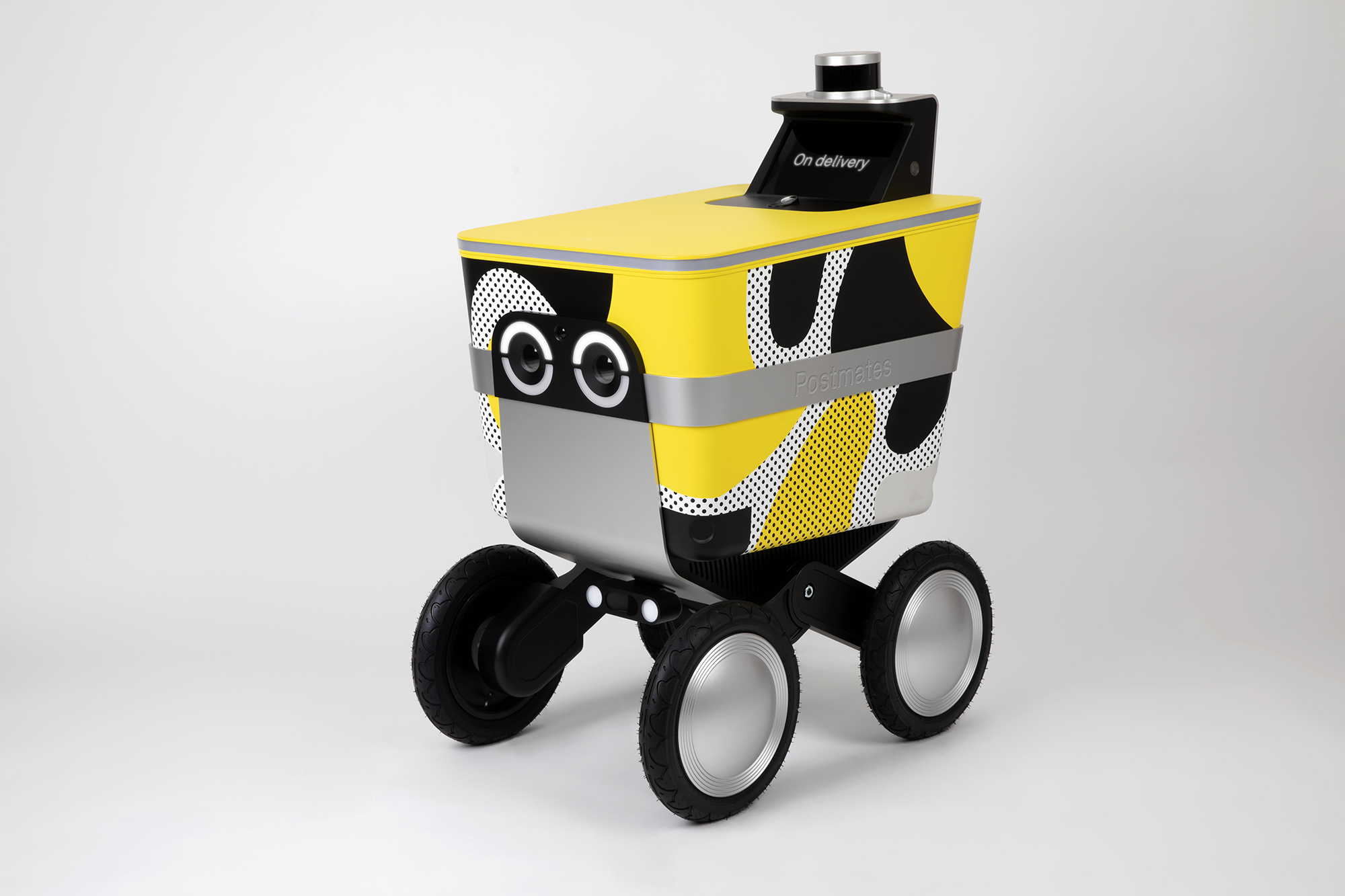

If autonomous rovers are going to start bringing us burritos and pasta and maybe even the occasional vegetable dish—as delivery company Postmates hopes that they will—they’re going to have to learn some social skills. For one, they’ll need to figure out how to make their way down crowded sidewalks. They’ll also have to communicate with people to let them know what they’re doing, since autonomous bots, and self-driving cars, can’t talk or gesture the way humans do.
The latest droid built for lugging takeout is a servile bot called Serve, and Postmates designed it to make short-haul deliveries in cities. To know what’s going on, it has a lidar sensor on top, in which spinning lasers let it perceive objects around it and know how far away they are. (It’s similar to what you’ll find guiding self-driving cars on the roads.) That’s not all. Behind each artificial eye is a camera, with six more imaging devices spread around the ‘bot. In its cargo bin is another sensor that allows Postmates to know if there is a package in there or not.
“One of our key decisions early on was to rely heavily on perception and the robot’s ability to see the environment,” says Ali Kashani, the vice president for robotics at Postmates. (That’s where the lidar sensor really helps.) Since the sidewalk is “a very chaotic environment,” he points out, the bot needs to be able to take it all in and figure out what to do.
This robot, and others like it, also must be able to signal their intentions to the organic beings walking alongside them (just like self-driving cars sometimes do). For that, it has a number of approaches. One is using its eyes, and another is a colorful light ring that goes around the top.
Say it wants to let a pedestrian know that it’s going to yield for them, Kashani says. “It would use its eyes; it would look down,” he explains. It can orient its wheels in such a way that it indicates it’s not about to roll in front of them, and the light ring on top enters a “resting mode, which is like a breathing pattern.”
“All of those together imply that’s it’s going to stop,” he adds. It can also use the lights on top like a turn signal, which is intuitive, and its peepers come in handy with that kind of maneuver, too. “Its eyes also look left and right when it’s turning left and right,” says Kashani.
And using eye movements—and other non-verbal cues—is a good strategy, says Aaron Steinfeld, an associate research professor at Carnegie Mellon University who focuses on human-robot interaction and advanced transportation systems. He likes that the rover is capable of “deferential behavior,” which he says isn’t common with robots.
Serve is intended for sidewalks, and Steinfeld says that environment is challenging. It’s easy for people to move fluidly with a crowd—they usually can do it (with varying degrees of success) while staring at a smartphone. For a bot, that’s a lot. “We actually have active research on robots navigating socially around people when they’re moving,” he says. “And it’s really tricky to do this well.”
On easy way for a robot to handle that scenario? “If they’re willing to have the robot wait for a crowd to get past, they can solve a lot of those problems just by being patient,” Steinfeld says.
Postmates says they plan to use Serve in Los Angeles area at first, and that its intended chore is to “move small objects over short distances efficiently.” The electric rover can travel 30 miles on one charge and is capable of schlepping 50 pounds, they say.
And of course, Postmates and its Serve bot aren’t the first company intending to use robots to deliver goods, either on sidewalks or the street. One well-know delivery robot company is Starship Technologies, and then there’s Nuro, which makes a larger self-driving robot designed for the streets and delivering groceries. According to a representative for Nuro, they plan to start actually using those bots, called the R1, “soon” in Scottsdale, Arizona.